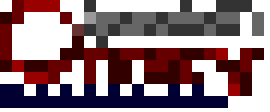
 |
Phobos & Deimos |
|
| |
Mars has two very small moons - Phobos and Deimos. They were discovered by Asaph Hall in 1877. He named them after Mars' mythological attendants: fear (Phobos) and terror (Deimos). It is likely that they did not form with the planet, but are captured asteroids. This is believed because they are both small, and Mars is reasonably close to the asteroid belt.
Both Phobos and Deimos are very close to the planet compared to Earth's Moon. Their orbital radii are 9,378 km and 23,459 km respectively. Phobos is the larger of the two, but would appear from the surface to be about 1/3 of the size of our Moon. Odd ShapesMars's moons are so small that their gravity is not enough to have pulled them into a spherical shape. The first photograph of Phobos was taken by Mariner 9. Its mission was to map the surface of the parent planet. However, on arrival (becoming the first artifical satellite of another world), Mars was enveloped in a dust storm. It was ordered to turn its attention to the moons, delivering detailed photographs. |
Frequent Eclipses!
Slow MoverDeimos, on the other hand, is nearly three times further away than Phobos, and orbits Mars in about 30 hours. This is just a little longer than the martian day, so Deimos would hardly move in the night sky - although again it would probably be eclipsed, and would be very small and feint anyway. Remember that Mars is considerably further away from the Sun than Earth, so recives less sunlight.
| ||||||
|
Sun | Mercury | Venus | Earth | Moon | Mars | Asteroids | Jupiter | Saturn | Uranus | Neptune | Pluto | Kuiper | |||||||